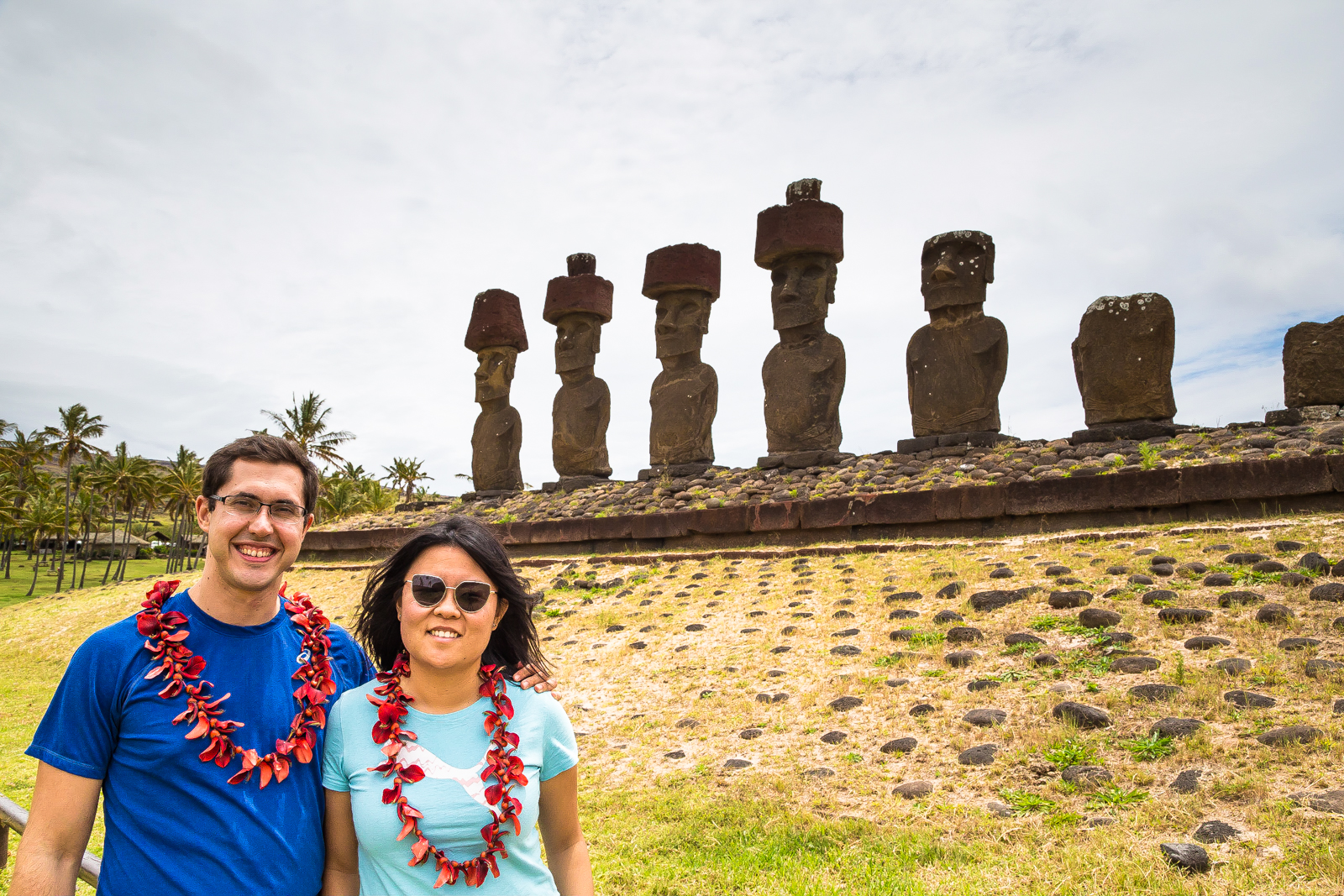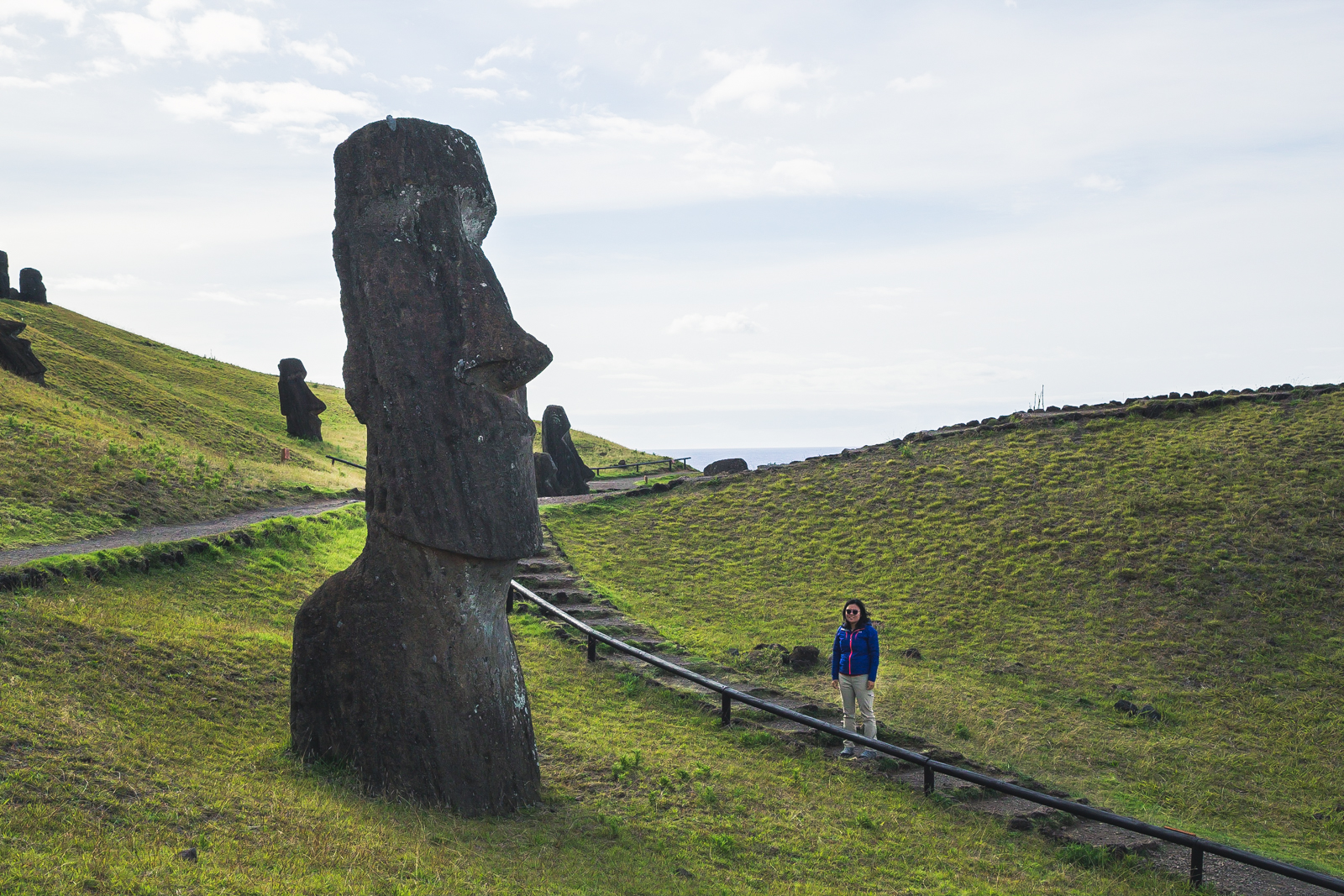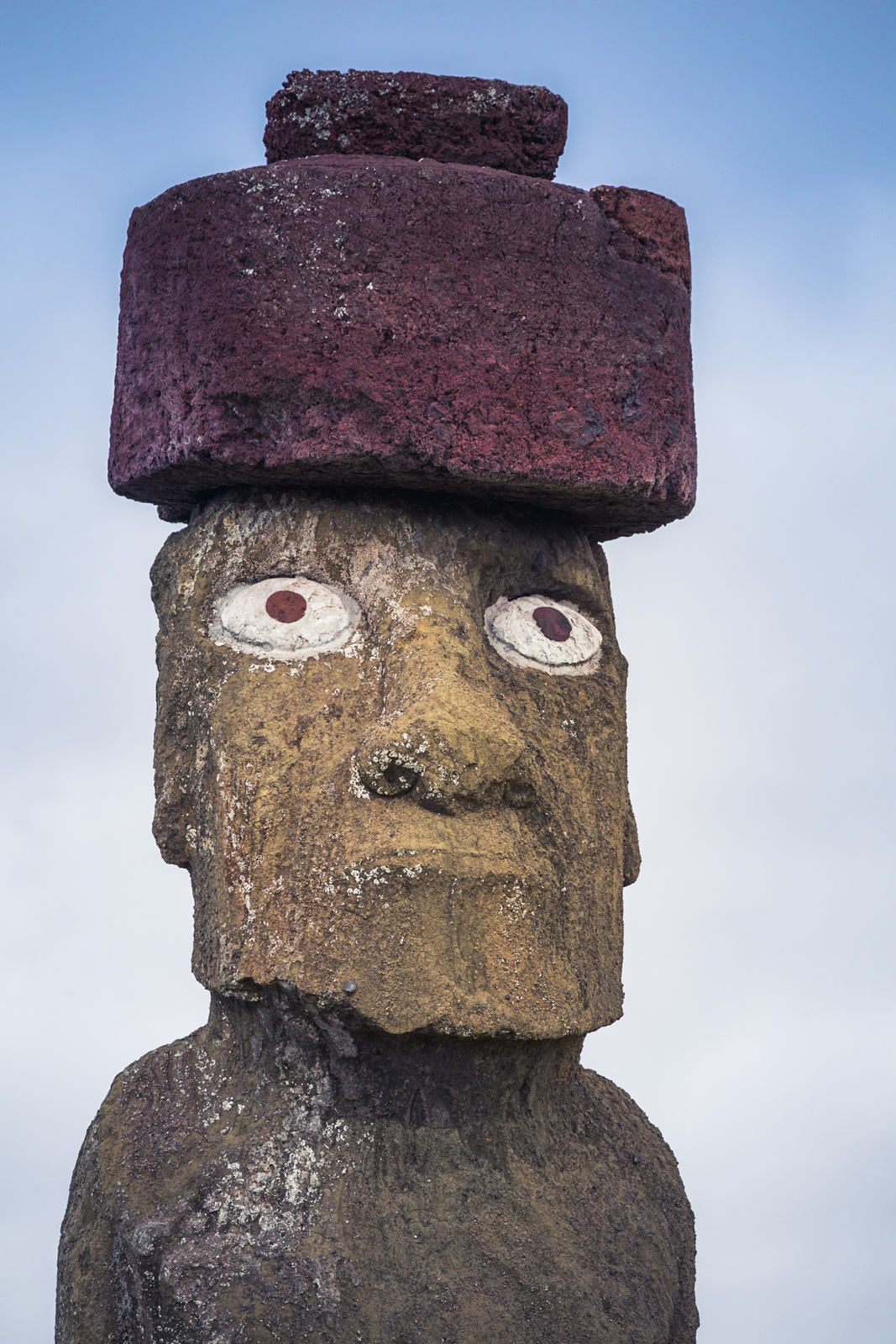Ever since I was a kid, I have always wanted to visit Easter Island (Rapa Nui), what is often considered one of the most remotely inhabited places on Earth. The mysticism and history surrounding Easter Island and the moai rivals those of many ancient civilizations. I still can’t believe my dreams of seeing the moai up close finally came true! And it came true in style – from Santiago, we snagged business class flight tickets for the same price as economy ones (the only time this will ever happen, I’m sure). Lay flat seats are possibly the best invention ever, and the 5 hour journey west into the middle of nowhere passed in no time.
Hanga Roa
Hanga Roa is the only urban area on the whole island not part of the national park and it was very chill and laid back. There are many lodges, restaurants and shops in town for the one flight of tourists that arrive each day, as well as natural pools along the shore. When we were not exploring the Rapa Nui National Park, we were walking around town checking out what life here was all about.

Rapa Nui and the Moai
There are many theories surrounding Rapa Nui, its people, and the moai due to the lack of records. To find more information about the island’s history, we visited the local Rapa Nui museum, which was very informative (and also free!).
The colonization of Rapa Nui dates back to around 1200 CE, when the first people came from the Marquesas Islands in the South Pacific. They brought their strong Polynesian culture with them, one of the most notable being the moai – monolithic human-like idols.

Stone tools were used to carve about 887 moai from the rocky slopes of the extinct volcano Rano Raraku over the few centuries the Rapa Nui people lived on the island. The moai symbolized the Rapa Nui’s ancestors and were meant to honor them, each representing a patriarch or matriarch of the tribe.
There are still many theories on how they were moved from their “birth place” on Rano Raraku to the many sites on the island, but one of the most popular ones is that they were “walked” upright. The tribesman would prop them up, tie ropes around their heads and sway them from side to side which made it look like they walked to their sacred platform. This seems quite fitting in a way, considering the symbolism of walking your ancestors to their final resting place.

Moai production was at its peak between 1200 and 1500. However, one theory indicates that the moai production led to the depletion of natural resources on the island, causing a civil war and the decline of the Rapa Nui people. During the period of civil war, many moai were toppled as a sign of attack to each tribe.
Rano Kau, Orongo & The Birdman Cult
The toppling of moai marked a new era in Rapa Nui history – the decline of the moai and the beginning of what is known as the birdman cult (tangata manu) influencing the island. The birdman cult was an island-wide competition to see who would rule it all. Every year when it was time for the birds to breed around Easter Island, men from different families would gather near Rano Kau (one of the three volcanoes that formed the island) to take part. They ventured down the steep cliffs to the ocean and swam across to the further small islet of Moto Nui, passing by the pinnacle island Moto Kao Kao on the way. There, they would wait for days, sometimes weeks, until the manutara bird laid its first egg on the island. The first man to make his way to Moto Nui, grab an egg, and make his way back to the island would be crowned the winner.

Right by Moto Nui and Moto Kao Kao was the ceremonial Orongo village where the birdman cult would begin every year. The conical shape of Rano Kau’s crater is still preserved and it is possible to walk along its rim, looking at what was once the stage for violent eruptions.

Nowadays the crater is filled with a bio-diverse marsh ecosystem. The crater rim provides protection from the strong winds that hit the island as well as traps a lot of moisture, making it the perfect place for flora and fauna to flourish. From Rano Kau, it is also possible to see most of the island.

Anakena Beach
As a volcanic island with rocky shoreline, sandy beaches are scarce on Easter Island. Anakena is one of only two beaches, luring many locals and tourists alike. It was where we saw our first moai up close! A nice boardwalk leads into the beach from the gate as the palm trees open up to the sea and the Ahu.

An Ahu is a Rapa Nui ceremonial stone platform with moai. Ahu Nau Nau at Anakena has seven standing moai as wel as some village ruins nearby.

The beach itself was very pretty with palm trees, soft white sand and calm deep blue waters. The nearby Ahu makes it a truly Easter Island beach, unlike any other. It was cool beyond words to finally see these massive rock carved statues in person!

Rano Raraku
Perhaps the most mythical place on Easter Island is Rano Raraku, another volcano and the site where moai carvings took place. It was literally a quarry and moai factory back in the day! More than half of the moai remaining on the island are found here.

The rocky sides of the extinct volcano provided the raw materials the Rapa Nui people needed to carve their idols. Here we saw moai in all stages of production. As opposed to at the Ahu where a few are standing, the field at Rano Raraku was dotted with them everywhere. We can only imagine what this place was like at its prime.

Rano Raraku was the most photogenic site on the island and where you could get the closest to the moai. We spent over two hours here admiring them from every angle.

Moai in the quarry didn’t have eye sockets carved, so it is believed that they were carved once the Moai were placed on their Ahu. Placing the eye on the Moai was a very important ceremony. Imagine giving your ancestors eyes to watch over you and your family!

Ahu Akivi
Ahu Akivi also had seven standing moai, similar to Anakena. The cool thing here, though, was the chance to take perspective photos! By standing behind the Ahu, it looked like we were right next to the statues and appeared to be touching them. Please note that we are not actually touching any of them and it is absolutely forbidden to touch the sacred moai!

Sunrise at Ahu Tongariki
The best Ahu on the island, watching the sun rise behind 15 standing moais at Ahu Tongariki is the experience of a lifetime. There is nowhere better in the island that captures the magnificence and awe.

It was just incredibly beautiful. To the left of Ahu, rocky cliffs dropped to a small islet. Beyond were rolling hills, the Pacific Ocean and all the sunrise colors in the clouds.

One moai stands at the gate of Ahu Tongariki, guarding and giving perspective to all the rest.

Sunset at Ahu Tahai
Just a short walk from Hanga Roa, Ahu Tahai is the counterpart of Ahu Tongariki, famous for its sunset backdrop as it lines up perfectly with the setting sun.

In the evenings, people flocked here to grab a spot on the vast lawns and patiently wait for the sun to touch the horizon. We came here every night and were never disappointed. A one-of-a-kind sunset.

Ahu Tahai at sunset, Easter Island
Stargazing on Easter Island
One of the activities I was most looking forward to on Easter Island was stargazing at night. Given the remoteness of the island, it was a perfect place for night photography. We were not very lucky – over the course of five days, there was a constant cloud cover. Thankfully, in one of our last evenings, the clouds cleared up enough for a starry night. It was magical.

Visiting Easter Island was everything I had imagined and more. There really is no better thrill than fulfilling a childhood dream.
